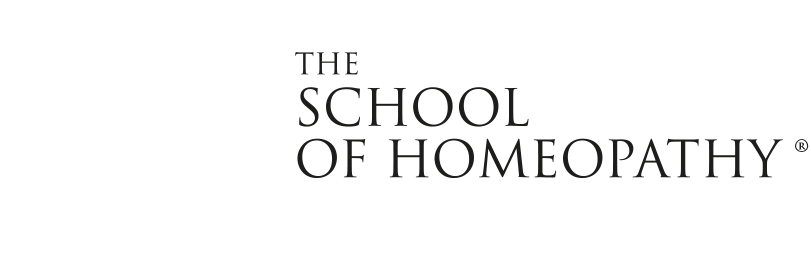


Homeopathy
Intro into Practice
Course Content
Beginning in-depth analysis of chronic cases; anamnesis; prognosis; the evolving theory of Miasms and its practical interpretation; the matching of potency to the patient; reviewing plans and strategies for case analysis; evaluating the effects of suppression and other blockages in any given case; evaluating the response to treatment and when to give a second prescription; reviewing the Organon; reviewing Kent's philosophy; introducing the Mappa Mundi and beginning to apply it to casework and remedy synthesis.
Remedies Studied
Alumina, Anacardium, Antimonium Crud & Tart, Apis, Cannabis Indica, Calc Phos, Calendula, Camphora, Carcinosin, China, Cimicifuega, Colocynthus, Conium, Cuprum, Drosera, Helleborus, Hepar Sulph, Hyoscyamus, Hypericum, Kali Carb, Ledum, Lillium Tig, Nitric Acid, Opium, Platina, Plumbum, Psorinum, Pyrogen, Stramonium, Stannum, Syphilinum, Tarentula Cub & Hisp, Thuja, Veratrum Alb.
Cases Studied
Darren – assignment case
Bewildered – example case
Mr DD 1st Casetaking – assignment case
David - example case
Darren – analysis case
Mr DD 1st Casetaking – analysis case
Mr DD 2nd Casetaking – assignment case
Natalia – assignment case
Maya – example case
Miss Soulange – assignment case
Mrs MH – assignment case
Rita – assignment case
Mr DD 2nd Casetaking – analysis case
Rubin – example case
Wilf’s Wife – assignment case
Insanity – assignment case
Mrs MH – analysis case
Rita – analysis case
Alexis – assignment case
Wilf’s Wife – analysis case
Full detail of each month is given below, with the aims and learning outcomes
Unit Eight : Miasms
Aims
This unit aims to introduce you to Hahnemann’s observations and labelling of the three miasms; Psora, Sycosis and Syphilis. You will study the development and history of his theory and how it has evolved to include the miasms of tuberculosis and cancer. You will be asked to apply this theory through an observation of how miasms may be perceived in cases. In addition, you will study nine homeopathic remedies, including a full synthesis of each remedy.
Learning Outcomes
At the end of this unit you will be able to:
- Explain the concept of miasms and how it has evolved since Hahnemann
- Outline the three fundamental miasms as described by Hahnemann
- Explain the practical application of homeopathic miasm theory
- Identify modalities and key symptoms of homeopathic remedies
- Identify key signature elements of homeopathic remedies and relate them to mental, emotional and physical symptoms
- Compare and contrast three remedies belonging to the same botanical family
Unit Nine : Case Management
Aims
This unit aims to introduce you to the concept of case management, outlining what is involved in assessing how a patient has reacted to a remedy and subsequently how the homeopath can proceed with treatment. You will study aspects such as noticing signs of change, re-prescribing or changing a prescription, and ‘therapeutic’ remedies. It will also cover how you can differentiate between different remedies that can be used to treat similar pathological states and the factors that are important when selecting potency and dosage of a remedy.
Learning Outcomes
At the end of this unit you will be able to:
- Identify and explain when to change medicine, frequency or potency during the course of treatment
- Analyse favourable and unfavourable reactions to a remedy
- Identify the factors that can affect a patient’s response to a remedy
- Explain the states and symptoms of six homeopathic remedies
- Compare and contrast symptoms of four remedies
- Analyse, repertorise and differentiate between remedies in a case
Unit Ten : Summary of Homeopathic Principles
Aims
This unit aims to demonstrate how to analyse an individual case from the first consultation, perceiving what needs to be cured, and how to assess the nature of a patient’s constitution. The homeopathic concept of prognosis will be described and the many factors that can affect prognosis explored. You will learn how to recognise your responsibilities as a homeopathic prescriber, including how to monitor a patient’s reaction to a remedy and management of a follow-up consultation. In addition you will consolidate your knowledge of homeopathic philosophy and its main principles and study a further eight remedies from the homeopathic materia medica.
Learning Outcomes
At the end of this unit you will be able to:
- Assess prognosis for a patient after observing the action of the medicine
- Explain the main factors that could alter a patient’s prognosis
- Analyse the requirements and factors for different case management scenarios
- Review your knowledge of homeopathic philosophy and principles
- Compare and contrast the remedy pictures and states of seven homeopathic remedies
Unit Eleven : Case Analysis Strategies
Aims
This unit aims to introduce you to some alternative strategies of case analysis, taking an in-depth look at essence prescribing, the totality of symptoms and the value of keynotes. In addition, you will study other factors that can be helpful in case analysis such as modalities, case history and miasmatic influences. You will be guided through the analysis and follow-ups of a case example in detail using the MacRepertory as a tool to help find appropriate prescriptions. In addition, you will study a further four remedies from the homeopathic materia medica.
Learning Outcomes
At the end of this unit you will be able to:
- Discuss alternative strategies for case analysis
- Define the meaning of ‘concomitant symptoms’ and discuss their usefulness in analysing a case
- Discuss action and reaction as defined by Hahnemann in relation to case analysis
- Illustrate and elucidate in detail the remedy pictures of three homeopathic remedies
- Analyse case examples in detail and make appropriate suggestions for remedies, potencies and dosage
Unit Twelve : Anamnesis of Acute & Chronic Disease
Aims
This unit aims to deepen your understanding of acute and chronic disease and acute prescribing. You will study the anamnesis of a patient, paying attention to their background and lifestyle, and be introduced to the use of a time line in case analysis. You will review miasms in relation to case analysis, study selected aspects of Kent’s teaching on homeopathic philosophy as detailed in his Lesser Writings and study a case example in detail. The study of homeopathic materia medica will be further explored, through four more homeopathic remedies.
Learning Outcomes
At the end of this unit you will be able to:
- Define acute and chronic disease
- Discuss the importance of using a time line in homeopathy case analysis
- Evaluate individual susceptibility, including maintaining causes and aetiological factors
- Analyse four case examples demonstrating clear strategies for remedy choice
- Describe in detail remedy states for three homeopathic remedies
Unit Thirteen : Primary & Secondary Reaction
Aims
This unit aims to familiarise you with the importance of the second prescription and deepen your knowledge about potency selection. You will look at various aspects of remedy reaction, the differences between primary and secondary action and how to deal with adverse reactions. You will also be introduced to the Mappa Mundi, to be discussed further in Unit 14. In addition, you will look at the issue of immunisation by vaccination and protocols for vaccination in your country. Another interesting case study will enable you to test your knowledge of analysis and homeopathic remedies. Finally you will study six more homeopathic remedies.
Learning Outcomes
At the end of this unit you will be able to:
- Define primary and secondary action
- Outline government policy for immunisation in your country
- Critically review immunisation by vaccination with reference to the theory of miasms and genus epidemicus
- Evaluate strategies for patients who appear not to have been well since vaccination
- Compare and contrast particular symptoms of five key homeopathic remedies
- Analyse two case examples and suggest a remedy for each
Unit Fourteen : Mappa Mundi
Aims
This unit aims to introduce you to the Mappa Mundi (The Four Elements), the interpretation of symptoms and symbols and how this can be applied to analysis and remedy selection. You will learn the origins of the Mappa Mundi, dating back to ancient Egypt. You will also study the four elements and their associated temperaments and how the Mappa Mundi can be applied in homeopathy. In addition, you will have the opportunity to apply Mappa Mundi theory to two new remedies and two previously studied remedies.
Learning Outcomes
At the end of this unit you will be able to:
- Explain and consolidate your knowledge of the Mappa Mundi
- Illustrate the Mappa Mundi with its associated symptoms
- Analyse and map seven homeopathic remedies on the Mappa Mundi
- Analyse two cases using the Mappa Mundi

Training as a homeopath at School of Homeopathy has been a wonderful, inspiring and life-changing experience. I have learned so much about so many things, especially the fascinating depths and uniqueness of each individual patient. Being a homeopath is humbling, extremely rewarding and never ever boring. I love it so much.
Samantha Pereira, Graduate















